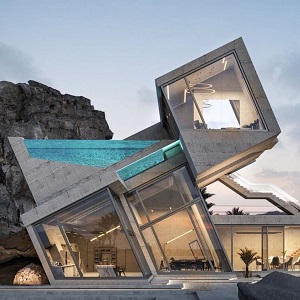Why Architecture Programs are Embracing Design Thinking Approaches

For centuries, architects are trained to think as well as build solutions by leveraging the design process step. While design thinking is a non-linear iterative process which the teams utilize for gaining understanding about the users, redefine problems, challenge assumptions, & generate innovative solutions for prototyping & testing, it involves five main phases such as Empathize, define, ideate, prototype and test.
Empathize
The empathize phase includes the element of understanding who you are designing for, the problems that should be solved as well as the challenges that may arise when solving them. Adequately, depicting this specific phase involves either looking beyond businesses or private objectives to focus on various stakeholders, ask them the right questions as well as gather relevant insights. And for architects, this may comprise various factors such as considering local communities, cultural connections, environmental features as well as resonant aesthetics.
Define
The define phase puts all the gathered insights into practice in order to define the landscape and the clients that you are designing for. Finding themes and patterns and achieving agreement among the stakeholders as well as the design team are therefore the major objectives.
Ideate
A multi-stakeholder architectural team will come to some of the creative pathways that are assessed for viability as well as longevity through various steps in the process such as brainstorming, mind-mapping, deep discussion as well as strategizing. Diverse collaboration is highly beneficial in the ideate phase since it allows several ideas to arrive at the table for thorough analysis.
Prototype
The prototyping phase is mainly marked by experimentation, innovation as well as constant iteration. Here the design-led architects start to find new solutions that are architected in the ideation phase and designs are not only collaboratively critiqued, but also reviewed, rejected & reformed in the process in a rapid fashion, that depicts flaws, opportunities as well as surefire moves, ahead.
Test
This is the phase where the crux of the empathy phase comes back into play. Furthermore, several stakeholders are also engaged with the proposed solutions for feedback which facilitates in either validating or invalidating the design paths that are pursued, and would highlight any missed gaps & finally gain direction which is based on a more tangible design idea.
In most cases, the design vision can be re-informed by using the feedback. It will help the designers to navigate back into either the ideation or the prototyping phase.
Creating sleek new technology & products
Design thinking began as one of the processes for creating sleek new technology & products. However, this methodology is implemented on a large scale across the private as well as public sectors, for both business as well as personal projects, across the globe, now. While design thinking is the process for solving multiple problems by prioritizing the requirements of the clients above all else. Furthermore, it relies on observing with empathy, how humans interact with their environments & employ an iterative, hands-on approach for building solutions that are innovative.
Design thinking is "human-centered". Design thinking utilizes the evidence of how consumers engage with a product/service, instead of how an organization thinks it will engage with it. In order to be truly human-centered, designers look at how people use a product/service and continue to refine the product with an aim to enhance the consumer experience. And, this is the iterative part of design thinking. Also, it favours moving quickly in order to obtain prototypes to test, instead of endless research/rumination.
Architecture with architecting
It is architecture with architecting and this is because architecting helps us in envisioning an on-going, iterative process while architecting interaction is the philosophy that guides while designing spaces. For delivering an agile space which keeps evolving as the requirements & desires of its users vary.
If you have ever solved a huge problem and helped in designing a solution for it, there are good chances for you to utilize a few of the steps that are added in the design process. The idea behind design thinking is applying the problem-solving methods as well as techniques that are found commonly in design in order to solve problems & questions out of the regular design scope and that could be a strategic problem, along with the development of a service or even a political issue. In other words, design thinking is to think like a designer.
Architects and design thinking
In recent conversations, we have heard several architects using these buzz words of whether architects own design thinking, should they? Today, the way we work, live, travel, consume, manufacture has become subject to digital transformation. However, the architects' capibility for the synthesis of complex needs has the potential for developing new as well as the required systems for cities, industries, & societies beyond building design.
Designers bring their specific methods to the business by taking part themselves from the earliest phases of product & service development processes or either by training others to leverage the design methods for building innovative thinking capabilities within companies.
Design thinking leverages elements from the toolkit of the designers such as empathy & experimentation in order to arrive at innovative solutions. By implementing design thinking, decisions can be made based on what future clients would really want rather than relying completely on historical data or making risky bets based on instinct instead of using the evidence.

